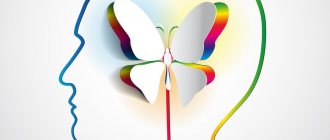- Home >
- Symptoms >
- Brain fog
Fog in the head, cloudy consciousness, wobbly head... Today, more and more often, it is with such “vague” complaints that people of different ages turn to the doctor. As practice shows, such a condition can indicate many diseases, but most often it is a manifestation of one of two causes - cerebrovascular accident or neurosis.
At a consultation with a neurologist:
- Conducts an inspection;
- Listens to patient complaints;
- Make a preliminary diagnosis;
- If necessary, he will refer you for additional studies, which can be completed in our center;
- will prescribe an individual course of treatment.
In each of these cases, the feeling of fog in the head is accompanied by a number of characteristic symptoms and requires its own treatment method.
The main mistake of beginners: just because you were distracted does not mean that meditation was a failure
The second type of meditation is concentration training. I do this type of practice much less often, but I try not to score. Select the object that you will observe. Some people meditate on a candle, on sounds, on the beat of their heart, but most often I choose breathing: inhale, exhale. I can even say in my mind: “Inhale, you exhale,” to stop the “radio in my head.”
Of course I'm digressing. When I notice that I’ve been distracted, I simply note it (I’m even glad that I’m returning to practice again) and again turn my attention to my breathing. Beginning meditators often give up because of this: “Oh, I get distracted too often - that means I’m not succeeding, it’s not my thing.” But the only meditation that failed was the one you didn’t do. It doesn't matter how many times the mind gets distracted in the process.
Your browser does not support HTML5 video.
My very first misconception about meditation was that I tried not to think - now I find it funny: this attitude brought me a lot of disappointment. This is one of the stereotypes that meditation is a process without thoughts. Meditation is training attention through the effort not to float by inertia.
When I started meditating, I thought: “Wow, I’ve been doing this for so long.” And then I began to notice more often that I was distracted, and such a crisis occurred. But they suggested to me that, on the contrary, this is progress: “attention” developed, and in a shorter period of time I began to notice that I was distracted. And at first you get distracted in the same way, only you find yourself in this distraction about fifteen minutes later.
Sometimes I use the Insight Timer application - I set a timer and sit, and when I’m really, really lazy to do something myself, I turn on some guidance there with the voices of advanced practitioners.
And the third type is of emptiness , but this is already from the category of spiritual practices. To find this emptiness, you first note: I see, I hear, I feel. I see - this is some kind of picture before my eyes, I think - I hear my voice, the feelings are clear - it could be irritation, or love, or anything. You just sit and designate everything that comes, and the emptiness is the moments between it all, almost seconds or milliseconds. This is really very difficult, you need many years of constant practice or go to a retreat where there will be fewer distractions; in ordinary life such states are rare. Plus, I understand that for now I don’t need it, as long as I want to show myself more in action.
Causes
The many causes of brain fog can be divided into two groups: overwork and illness.
Fatigue is caused by:
- Exposure to excessive stress.
- Lack of sleep, malnutrition (or starvation).
- Abrupt change in time zone or climate.
- Overload of information, physical labor, strong emotions.
- Past diseases and poisonings.
Conditions that cause brain fog:
- Psychiatric diseases: schizophrenia, psychosis, depression, neuroses, anxiety and psychosomatic disorders.
- Inflammation, fever (increased temperature), infections.
- Organic damage to brain tissue (traumatic brain injury, atrophy or brain tumors, strokes and heart attacks), encephalopathy.
- Vascular diseases (hypertension, hypotension), intracranial pressure disorders.
- Diseases of the cervical spine with impaired blood flow through the vertebral vessels.
- Diseases of internal organs, endocrine diseases.
You can do anything with meditation - even washing windows.
Everything I just talked about is this concept of the mental plan: you come up with something for yourself and do it, but there are other options. This week we went to visit my friend Anya Mekh - and she spontaneously gave us an art meditation. You just try to follow the body and the breath without using any effort: close your eyes, exhale - and off you go.
It’s so interesting to look at the drawing later! This was the first time I looked at my work as a spectator. Usually, there is still some kind of minimal idea: “I’ll draw this now” - and somehow you fight with it all or, on the contrary, enjoy the process, how great everything turns out. And then you did something and looked: “Wow! Cool!"
View this post on Instagram
A post shared by Shuma (@shumaby) on Oct 21, 2022 at 2:39am PDT
Diagnostics
Patients who experience heaviness in the head require consultation with a neurologist. The specialist receives valuable information during the initial examination, determining the neurological status and conducting simple tests to assess autonomic innervation. During a conversation with the patient, the fact of dependence on alcohol or psychoactive substances can be revealed. Diagnosis of the causes of heaviness in the head involves the appointment of instrumental and laboratory methods, of which the most commonly used are:
- CNS study.
Standard examination in neurology includes echoEG, which is used to measure intracranial pressure and identify space-occupying pathological formations. To clarify the diagnosis, EEG, CT, and MRI of the brain are prescribed. REG and extracranial ultrasound data have diagnostic value. - X-ray of the spine.
Images of the cervical spine in two projections make it possible to determine bone deformation, narrowing of joint spaces, and developmental anomalies. Bones and neurovascular bundles are visualized in detail during either MRI. - ENT examination.
Heaviness in the head accompanied by dizziness requires a standard otoscopy and a hearing test using audiometry. For diagnostic purposes, specific tests are performed: acoustic impedance measurement, electrocochleography, vestibulometry. - ECG.
Unpleasant symptoms may be associated with cardiac problems, for rapid diagnosis of which electrocardiography is recommended. If abnormalities are detected on the cardiogram, the diagnosis is clarified using 24-hour blood pressure monitoring and echocardiography. - Blood analysis.
When heaviness in the head is combined with an increase in body temperature, it is necessary to examine the hemogram. The results of the analysis indicate an inflammatory process (leukocytosis and increased ESR), and also help diagnose polycythemia (with an increase in the number of red blood cells).
Massage of the cervical-collar area
If you don't meditate for a week, do you feel the difference?
Without little mindfulness practices, I speed up a lot - faster, faster, multitasking - and at some point I don’t feel very good anymore: I burn out. More precisely, even like this: I don’t feel at all. Suddenly on the street I notice: “Why am I walking so fast?”, there are a lot of unconscious actions from some patterns - chick, and you are already saying or doing something that you had previously decided not to do, some emotions are turned on by default .
But everyone has their own periods - sometimes it’s great to take a break from it all. It happened to me that I gave up on practice for a month and just lived. Enjoyed the aftertaste. It’s impossible to live your whole life just according to a schedule; sometimes it’s cool and important to get high. Meditation should be a friend, a tool, and not violence against oneself.
Both of our heroines meditate in creativity - the pictures and videos in this post were made by them for an online support meditation, which will take place this Saturday at 20:00 on shuma.by and radioplato.by.
Mila cat
organizer Vulica Brasil
– When I was planning a trip to Thailand, I was in a state of scorched forest - this always happens to me after the next festival. To bring life back into myself, I chose a direction that was as unfamiliar and culturally alien as possible. I had to piece together clues about what to do there, and an old friend, a psychologist, advised: “There are mindfulness schools there.”
Severe depression signs
If a person does not have the strength and desire to do anything, if he cannot force himself to do anything, and at the same time is constantly in a bad, depressed mood, then this indicates signs of a depressive state. Manifestations of depression also include constant laziness, which disguises apathy. The fact is that during severe depression, a person’s brain begins to work differently - its biochemical processes change, which leads to laziness. There are three main brain transmitters that are responsible for a person’s mood, energy and performance - dopamine, norepinephrine and serotonin. And when their work is disrupted, complete apathy sets in and there is a lack of energy to engage in any activity. In such cases, it is necessary to start treatment with special drugs on time, otherwise the person simply will not want to get out of bed in the morning and will completely lose interest in life. The consequences of severe depression can be very serious and negative for the patient - a constant feeling of fear and anxiety develops, eventually acquiring manic forms.
The course of severe depression in pregnant women deserves special attention. Since it often causes miscarriage. Therefore, at the slightest sign of depression, a woman needs to seek help from a specialist.
How I got to the monastery
Do you remember Kim Ki-duk's film "Spring, Summer, Autumn, Winter... and Spring Again"? Such Asian Zen - I looked and thought that if I ever went there, I would like to live in a monastery. My whole life is in movement, sometimes excessive. I am all such a Brazilian, through feelings, experience, through everything tactile, dynamic. And I was scared to even imagine how I would sit in one place for hours. But I decided to take a course towards my fears.
I found a Buddhist monastery that offers retreats in English. I read the website and the first thing that catches my eye is getting up at 4 am. But anthropological interest prompted me to finish the job: in Brazil I was always immersed in the environment - through capoeira, through communication with root traditions. And in Thailand I spent a month on Koh Phangan: the nature, of course, is magnificent, but the island is a tourist island - it’s quite difficult to understand the Thais there. What do they represent from a spiritual, cultural point of view? This is what brought me to the monastery.
I had never practiced this at all and had little understanding of what awaited me. Friends told me about Vipassana - that you sit there for a long time in meditation. But in this monastery everything was different: lectures, readings, sitting meditations, walking meditations - all sessions lasted 40-45 minutes, with breaks. Even hot springs to relax before bed.
It was necessary to pass an interview. I was very afraid: I arrived, I traveled so many kilometers, and I don’t know whether they would take me or not. The program is for 10 days, they don’t recruit more than a hundred people, you can’t book - everything is on a first-come, first-served basis.
What are the rules?
You need to keep a vow of silence for 10 days - you cannot utter a word. All gadgets, passports, books, cameras are deposited at the very beginning. Your task there is not to reflect, not to be distracted, not to process reality, to try to abstract from it all, to get out of the wheel of desires. The desire to become someone, the desire to be a mother, all topics like coaching motivations are written down in cravings. Without all this, you will be able to experience the world as it is.
In the morning, a soft bell wakes you up, then readings - in a very calm voice, very slowly they tell you about mindfulness, some things in Buddhism. Placed in a half-asleep brain. I found sitting meditation difficult. Body scanning – about eleven times I caught myself tense in my stomach: I’ll relax it, but it will tense up again.
On the third day I was blown away
This program was a challenge for me; I placed myself in uncomfortable conditions and tried to somehow accept them. On the third or fourth day, I was blown away - frustration set in: “Why did I even come here, why are they zombifying me?”
The last meal is at 12 noon, the next at 9 am: the whole body resists as much as possible. I have a constant headache. There was a lot of internal war. But then, in the most desperate moment, I saw a guy who stood up in anger during meditation, walked away and punched the tree with all his might. I realized that I was not the only one, and there were even those who were worse off, and I felt better.
In general, our retreat center was emptying every day, many were leaving. I counted the days until the end, but I didn’t want to give up, sometimes I just freaked out and didn’t go to any meditations, I watched the monkeys and monitor lizards instead. But the closer to the end, the more interesting, I was especially impressed by the feeling of my own body, I haven’t focused on it for so long to completely and completely.
They also told me how to deal with my terrible migraines: first of all, wash your hair with cold water, eat something sour and breathe calmly.
Treatment methods for the condition
Magnetic therapy of the vessels of the neck and head helps improve blood circulation.
To eliminate discomfort, it is important to begin the fight against the underlying disease. Different methods can be used:
- Drugs. For depression and certain disorders, antidepressants are prescribed. Nootropics are used to improve cognitive functions. Substances that stimulate blood circulation are used for osteochondrosis and mental disorders. Appropriate means are also selected to combat hypertension.
- Folk remedies. Some conditions, such as low blood pressure, can be managed using unconventional methods. Herbal tinctures, special diets, decoctions and herbal teas are prescribed.
- Physiotherapeutic procedures. They occupy an important place in the treatment of physical and mental illnesses. Physiotherapy for VSD and osteochondrosis is very useful: electrophoresis, hirudotherapy, acupuncture, laser treatment, magnetic fields and infrared light.
- Massage and manual therapy. Prescribed for neurological disorders, as well as for diseases of the musculoskeletal system.
Normalization of work and rest, sleep and diet are the most important foundations for the recovery of patients.
It is recommended to engage in your favorite sports, especially swimming, spend more time in the air and nature, travel outside the city and avoid severe stressful situations. This will help in the treatment and prevention of exacerbations of diseases and mental disorders.
The feeling of emptiness in the head is specific and often occurs along with a dozen other unpleasant symptoms. Problems with blood circulation, osteochondrosis, VSD and even depression - all this can be the cause of poor health. To deal with it, you need to undergo a full diagnosis.
Meditation can be on the move and even at work
The main principle is awareness: so that everything you do in life does not go through automatic reactions. There were walking meditations : you had to walk at the speed of a turtle. Through breathing: place your foot on your heel, fix it, then on your foot, fix it, then transfer your body weight. In general, break down walking into sequential elements.
And gradually this fragmentation increases - you no longer decompose into three elements, but into five, then into 10. And so slowly you walk, like a frozen statue, you feel how your muscles move - you feel how your feet touch the floor, how the breeze blows.
There is a very beautiful place with a garden, ponds, birds, wild animals, scorpions. A state of complete absence of worries: they feed you, you don’t need to check the time - everything is on the bell, the schedule is the same.
My favorite meditation is duty - through work. You had to choose something to do for 1 hour a day: someone washed the floor, someone helped in the dining room. I chose to sweep the leaves around our house. This had to be done with maximum honesty and dedication. Well, I'm a perfectionist and a workaholic, it was nice to finally get something done.
There was also yoga - meditation through movement. Every movement there is based on breathing, this really helps not to get tired. There was singing. Before going to bed, a group walk around the pond, about a meter apart from each other: to feel the collective movement, not to get distracted, not to speed up, to pump up awareness in interaction.











